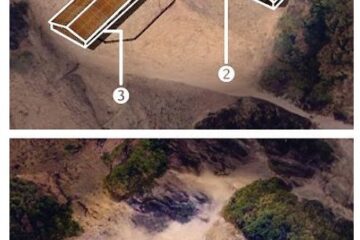Controversial Malibu hills access plan OKd
Conservancy’s proposal for camping and hiking will be sent to the state coastal panel. City officials fear increased traffic, fire risk.
Source of this article – Los Angeles Times, December 2, 2006
The Santa Monica Mountains Conservancy approved a controversial plan this week to further open the rugged hills of Malibu for camping, hiking and other activities, heightening a battle with canyon residents and city leaders over public access.
Malibu city leaders and other opponents have harshly criticized the access plan, contending that greater use of hillsides and canyons would result in more traffic, heightened fire risk and damage to wildlife habitat. City officials also say the conservancy, which plans to present its proposal to the California Coastal Commission, is trying to circumvent local land-use laws.
Proponents have accused residents of seeking to maintain the canyons as an elitist preserve. At a recent public hearing, the head of Outward Bound Adventures, an organization that runs environmental education programs for low-income children, many of whom are minorities, accused opponents of racism.
“It’s about keeping out the kinds of kids that I work with,” said Charles Thomas, the group’s executive director. Residents met his comments with angry shouts.
The plan calls for completing the long-planned Coastal Slope Trail, establishing 30 campsites in Ramirez, Escondido and Corral canyons and building a parking lot for about 30 vehicles in Escondido Canyon.
It would also allow the conservancy to resume holding weddings and other events at its Ramirez Canyon headquarters compound, a 22.5-acre haven that was once the estate of Barbra Streisand. The conservancy recently suspended those events after canyon residents successfully challenged them in court.
A hearing is to be held Monday on residents’ 1999 lawsuit to enforce a judgment declaring the conservancy’s use of the former Streisand property illegal.
The conservancy board’s vote disappointed Ramirez neighbors, said Steven A. Amerikaner, an attorney for the Ramirez Canyon Preservation Fund.
“We think that the plan is not consistent with Malibu’s local coastal program and that more should have been done to work with the neighbors and the city of Malibu to resolve those differences of opinion,” he said.
Since its creation in 1980 by state lawmakers, the conservancy has spent $450 million to preserve more than 60,000 acres of Southern California parkland, much of it within the coastal area of the Santa Monica Mountains. Many Malibu residents have alternately admired the conservancy’s success and resented its tactics.
Joseph T. Edmiston, the conservancy’s executive director, said the public “has a right to use the resources it has purchased.” The stepfather of a severely disabled son, Edmiston said he has an interest in making public parklands more accessible to the disabled.
By a 4-1 vote, the conservancy’s board decided Wednesday to present the proposal to the Coastal Commission, possibly this month.
The lone dissenting vote was cast by Linda Parks, a Ventura County supervisor, who said she was concerned about fire risks from overnight camping. Edmiston said the conservancy had taken steps to ensure that camping would be safe: Each campground would have a host and ready access to water, and campfires would be prohibited, as would camping on red-flag days.
Woody Smeck, a conservancy board member and superintendent of the Santa Monica Mountains National Recreation Area, praised the conservancy for taking “a holistic approach” to planning. One of the plan’s best aspects, Smeck said, would be linking parkland that falls under a variety of jurisdictions — local, state and federal.
Mayor Ken Kearsley lambasted the agency for refusing to conduct an environmental impact report on the proposal’s potential effects. He predicted that the city would challenge the plan in court.
City Atty. Christi Hogin said it was likely that Malibu would “at least challenge the inadequacy of the environmental review” and the attempt to bypass the city’s coastal program.
Environmental impact reports “are lights in a dark closet,” Kearsley said. “What are they afraid of? It’s a sad thing that some judge somewhere is going to decide this. The judge knows less than we know about it. It’s not good public policy to have judges deciding land use.”



0 Comments